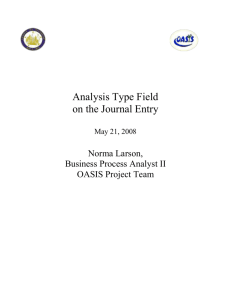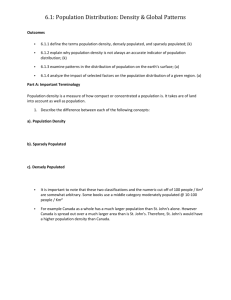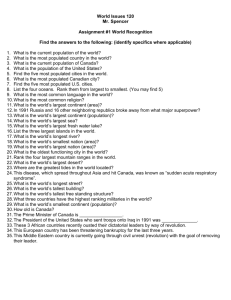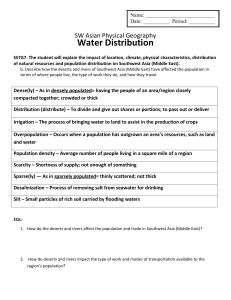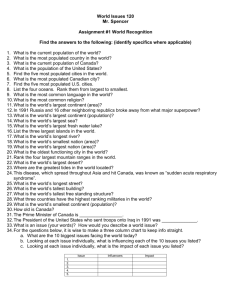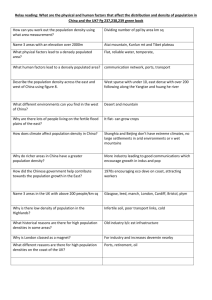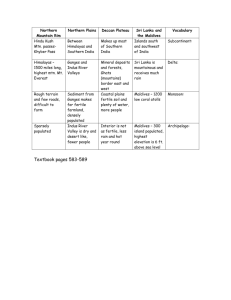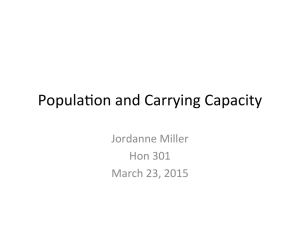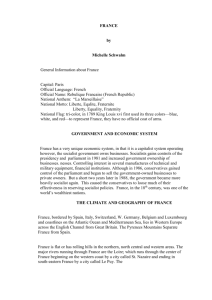Population Density and Distribution
advertisement
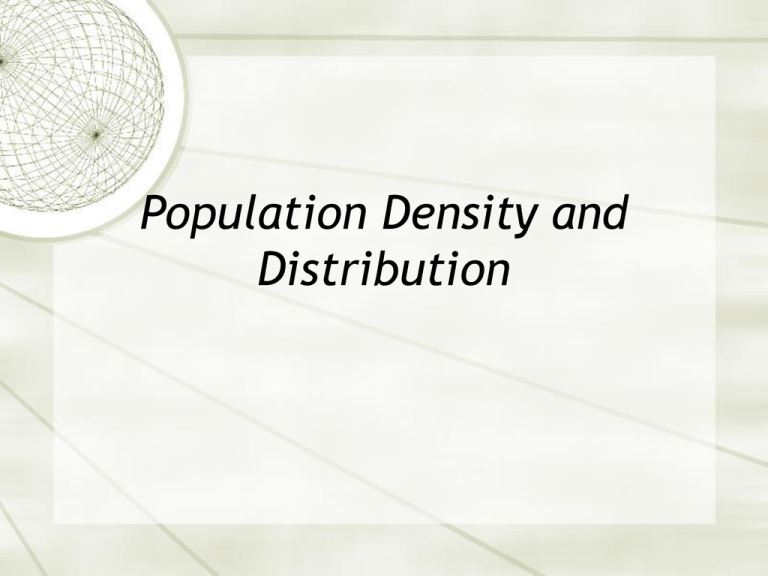
Population Density and Distribution Human Population In the last lesson you learned how to be a demographer. A demographer looks statistically at how people are distributed spatially and by age, gender, occupation, and so on. Human Population Now that we know how to compare populations by using population pyramids we have to ask ourselves an important question. Where do people live around the world? Population Distribution Population distribution refers to where people live around the world. For instance, in the United States most people live on the coasts or near major waterways. Population is not evenly distributed around the earth’s surface. Population Distribution Population is not distributed evenly because of several factors. Population Distribution The factors that influence population distribution are: natural resources, climate, economic development, government policy, rural/urban settlement, capital resources, and conflicts. Natural Resources People live closer to valuable resources such as oil, arable land, and fresh water. Most people in the world live near the coast or along a major waterway and they live on flat ground that is easy to farm. Natural Resources A good example of how natural resources affect population distribution is China. Western China is not heavily populated because it is mountainous or a desert. Climate There are parts of the earth where people cannot live or it is very difficult to live because it is too cold. People don’t live in Antarctica and very few people live in the arctic. Climate Few people live in hot climates such as deserts. Look at the Sahara and Gobi deserts. Climate Wet climates can also be a problem such as tropical rainforests. The Amazon rainforest is sparsely populated because the soil is not very fertile. Economic Development People don’t live in areas where there are no jobs. This is one reason why people migrate to other countries or to cities. We will discuss this in a later lesson. Government Policy In the United States people are free to live wherever they want, however, in countries such as China or the former Soviet Union the government forced people to live in certain areas. Government Policy The Russian government forced thousands of people to move to Siberia in order to develop the natural resources and economy of the region. Rural/Urban Settlement The location of cities affects population distribution. Think about the United States. Most of the major cities are on the coasts or near the Great Lakes. These are also the most heavily populated areas. Capital Resources Areas that have good transportation networks such as roads, trains, subways, or busses are more heavily populated. Conflicts Wars have a major impact on population distribution because people flee areas that have conflicts. Some examples are the Sudan, Rwanda, and the Former Yugoslavia. Population Density Population density is the number of people occupying an area of land. In this course we will use the number of people who live per square mile or kilometer. However, there are other ways of computing population density. Population Growth We know where people live and why, and we also know where the population is denser. Now let’s talk about why populations grow quicker than others. Population Growth China is the most populated country in the world. In the next 50 years India will have more people than China. Asia has over 1/3 of the earth’s population. Population Growth The factors that influence population A. B. C. D. E. F. growth are: Modern medicine and hygiene Education Industrialization and urbanization Economic development Government policy Role of women in society Modern Medicine and Hygiene Population will grow in countries with good hospitals and doctors because: A. Babies get regular shots B. People have regular health care C. There are no epidemics such as small pox, yellow fever, or cholera. Education Population will decrease in countries with many educated people because: A. More people have careers so they decide not to have as many children B. Fewer people are farming so they don’t want children Industrialization Population growth will decrease as a country becomes more developed. Countries that are highly industrialized have low population growth rates. Government Policy The government of China has a one child policy. Families can only have one child otherwise the population would grow too rapidly. If a family has more than one child they must pay a fine. Role of Women in Society A. Countries with low population growth rates have more women working in the labor force. B. Countries where women are expected to stay at home and be housewives will have high population growth rates.
